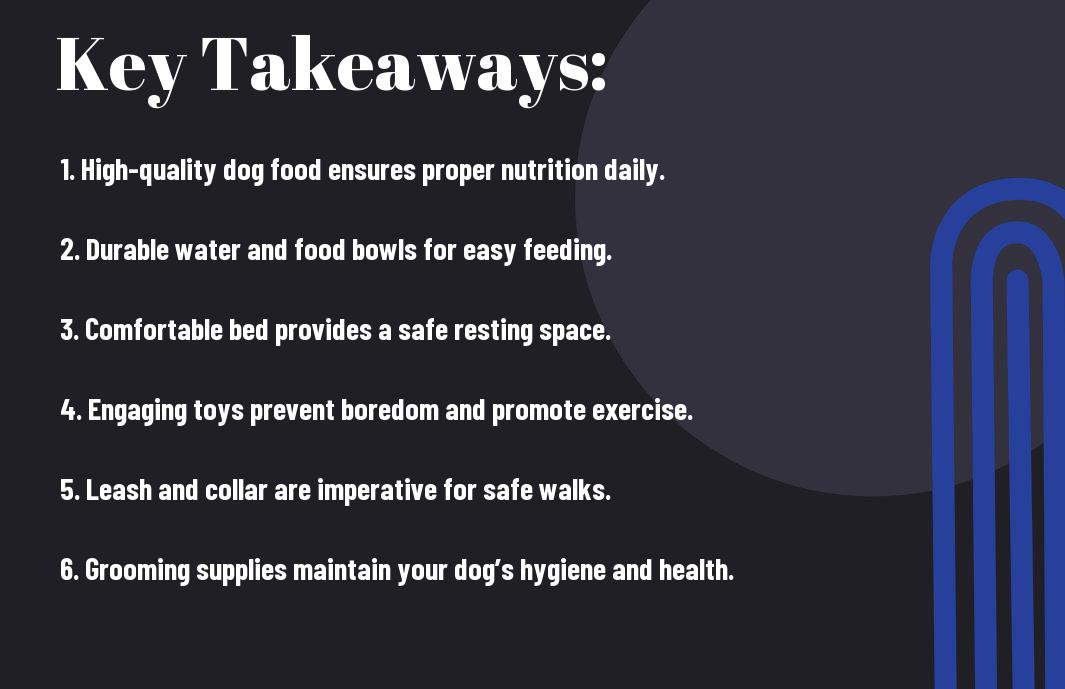Horses rely on you to keep them safe and healthy, especially during tough times like a drought. In this guide, we will provide you with imperative tips and strategies to manage your horses effectively when water and food resources are scarce. By implementing these practices, you can ensure the well-being of your horses and navigate through the challenges of a drought with confidence.


Understanding the Impact of Drought on Horses
How Drought Affects Horse Nutrition
Before discussing how to manage horses during a drought, it’s imperative to understand the impact of drought on your horse’s nutrition. When pastures dry up and forage becomes scarce, your horse may not be getting an adequate amount of imperative nutrients. This can lead to weight loss, decreased energy levels, and potential health issues if not addressed promptly.
The Importance of Monitoring Horse Health During Drought
For your horse’s well-being during a drought, it’s crucial to pay close attention to their health. Dehydration and heat stress can occur more frequently in horses during drought conditions, putting them at risk of serious health complications. Additionally, nutritional deficiencies from limited forage can weaken their immune system, making them more susceptible to illnesses.
Now, for instance, it’s important to monitor your horse’s hydration levels regularly. Dehydration can sneak up quickly, especially in hot, dry conditions. Watch out for signs such as sunken eyes, tacky gums, or decreased skin elasticity, as these could indicate your horse is dehydrated and needs immediate attention.
Assessing Your Horse’s Water Needs
Factors Affecting Water Requirements
You may be wondering how much water your horse actually needs during a drought. Several factors can affect your horse’s water requirements, including temperature, humidity, diet, and workload. In hot and dry conditions, your horse will need more water to stay hydrated. If your horse is on a high-fiber diet, they will require more water to aid in digestion. Additionally, horses that are in heavy training or performing strenuous work will need increased water intake to compensate for losses through sweating.
- Temperature
- Humidity
- Diet
- Workload
The key is to monitor your horse’s behavior and overall health to determine if they are getting enough water. The color and consistency of your horse’s manure can also provide clues about their hydration levels; hard, dry manure can indicate insufficient water intake.
Tips for Measuring Water Intake
To ensure your horse is getting enough water during a drought, there are a few simple ways you can measure their intake. You can track the amount of water you provide and measure what is leftover at the end of the day. Another method is to add a small amount of electrolytes to their water and monitor if they are drinking more than usual. Additionally, you can check your horse’s hydration levels by performing a skin pinch test; if the skin remains tented after being pinched, your horse may be dehydrated.
- Water intake measurement
- Electrolyte supplementation
- Skin pinch test
Any drastic changes in your horse’s water intake or behavior should be discussed with your veterinarian to ensure their health and well-being.
How to Identify Signs of Dehydration
Water is crucial for your horse’s overall health, and it’s crucial to be able to recognize the signs of dehydration. Some common signs to watch for include sunken eyes, tacky gums, loss of skin elasticity, and decreased capillary refill time. In severe cases of dehydration, your horse may experience lethargy, rapid breathing, and weakness.
Water is crucial for your horse’s well-being, and recognizing the signs of dehydration early can help prevent serious health issues.
Managing Pasture and Hay During Drought
Strategies for Rationing Pasture
Keep a close eye on your pasture conditions during a drought. Monitor the grass to ensure it is not overgrazed, as this can damage the root system and hinder regrowth when rains finally come. Rotational grazing can help manage the available pasture more effectively. Divide your pastures into sections and rotate the horses through them to allow for regrowth in other areas.
Tips for Selecting Drought-Tolerant Hay
Pasture conditions may not be enough to sustain your horse during a drought, so you’ll need to rely on hay as supplementary feed. Look for drought-tolerant varieties of hay, such as bermudagrass or teff, that can withstand dry conditions and still provide adequate nutrition for your animals.
- Choose hay with high leaf content for better nutrient quality.
- Consider hay cubes or pellets as an alternative to traditional baled hay.
- Check for mold or dust which could be harmful to your horses.
Recognizing the signs of quality hay can help you make the best choices for your animals.
How to Stretch Hay Supplies
While hay may be in short supply during a drought, there are ways to make it last longer. Strategies such as soaking the hay to increase moisture content or feeding hay in small mesh hay nets to reduce waste can help stretch your hay supplies. Additionally, offering hay only in the horse‘s feeding area can prevent trampling and spoilage.
Providing Alternative Sources of Nutrition
Not every drought leads to a shortage of forage for your horses. However, in times of extreme drought, your pastures may become dry and barren, leaving your horses without their usual source of nutrition. When faced with this situation, it’s necessary to provide alternative sources of nutrition to ensure your horses remain healthy and well-fed.
How to Use Grain Supplements Effectively
You can supplement your horse’s diet with grain supplements to ensure they are getting the necessary nutrients. When using grain supplements, you should be cautious not to overfeed your horses, as this can lead to health issues such as colic or laminitis. It’s crucial to consult with a veterinarian or equine nutritionist to determine the right amount of grain supplements to feed your horses based on their individual needs.
Tips for Incorporating Fats and Oils into the Diet
An effective way to add fats and oils to your horse’s diet is by incorporating them into their feed. Fats and oils are dense sources of energy and can help supplement your horse’s diet during a drought. Adding fats and oils to your horse’s diet can help maintain their weight and provide necessary fatty acids for overall health. This added source of energy can be beneficial, especially for horses with increased energy requirements due to a lack of forage.
- Choose high-quality fats and oils to ensure your horse is receiving the best nutrition.
- Gradually introduce fats and oils into your horse’s diet to prevent digestive upset.
- Monitor your horse’s weight and overall condition to adjust their diet as needed.
The Role of Vitamins and Minerals in Drought Management
Even with proper supplementation of grains, fats, and oils, your horse may still be lacking necessary vitamins and minerals during a drought. These nutrients are crucial for overall health, immune function, and performance. It’s necessary to ensure your horse is receiving adequate amounts of vitamins and minerals to prevent deficiencies that could impact their well-being.
A balanced diet rich in vitamins and minerals is key to maintaining your horse’s health during a drought. This can be achieved through high-quality supplements or commercially available feeds that are specifically formulated to provide the necessary nutrients. Monitoring your horse’s intake of vitamins and minerals can help prevent deficiencies and ensure they remain healthy and thriving.
It is crucial to provide alternative sources of nutrition for your horses during a drought to maintain their health and well-being. By incorporating grain supplements, fats, oils, and ensuring adequate intake of vitamins and minerals, you can help your horses thrive even in challenging conditions.

Reducing Stress and Heat Load
How to Provide Shade and Ventilation
There’s no denying that shade and ventilation are crucial during a drought to keep your horses cool and comfortable. Make sure your horses have access to shaded areas such as trees, run-in sheds, or portable shelters to escape the blazing sun. Adequate ventilation is also important to prevent heat build-up in their living spaces.
Tips for Managing Horse Movement During Drought
During a drought, it’s crucial to monitor and regulate your horses’ movement to prevent excessive heat stress. Limit strenuous activities such as riding or training during the hottest parts of the day. Ensure your horses have access to water troughs in multiple locations to encourage movement without overexertion. Monitor their behavior closely for signs of heat exhaustion and intervene as needed.
- Limit strenuous activities during peak heat hours.
- Provide access to water troughs in multiple locations.
- Monitor behavior for signs of heat exhaustion.
Perceiving the signs of heat stress early and taking appropriate action can prevent severe health issues in your horses.
Strategies for Reducing Heat Stress
The key to reducing heat stress in your horses during a drought is to provide ample opportunities for cooling. Ensure they have access to fresh, clean water at all times to prevent dehydration. Groom them regularly to remove excess hair and dirt that can trap heat. Consider using misters or fans in their living areas to help lower the ambient temperature.
Adequate hydration, grooming, and environmental cooling measures are crucial strategies for keeping your horses comfortable and healthy during a drought.

Monitoring and Adapting to Changing Conditions
How to Track Weather Patterns and Drought Indices
Your first step in managing horses during a drought is to monitor weather patterns and drought indices. Stay informed about rainfall levels, temperature fluctuations, and drought forecasts in your area. Use online resources or apps to track this information regularly. Additionally, pay attention to drought indices such as the Palmer Drought Severity Index (PDSI) to understand the severity of the drought.
Tips for Monitoring Horse Behavior and Health
For monitoring your horses’ behavior and health during a drought, it is vital to observe them closely on a daily basis. Look for signs of dehydration, weight loss, or changes in behavior that could indicate stress or illness. Keep a record of their water intake, feed consumption, and overall demeanor. Additionally, work closely with your veterinarian to develop a plan for health monitoring and any necessary adjustments to their care regimen.
- Observe your horses daily for any changes in behavior or health.
- Maintain records of water intake, feed consumption, and demeanor.
- Consult your veterinarian for guidance on monitoring and adjustments.
Thorough monitoring of your horses’ behavior and health is crucial during a drought to ensure they are coping well with the challenging conditions. By staying vigilant and proactive, you can address any issues promptly and keep your horses healthy and comfortable.
- By observing your horses closely, you can detect any health problems early.
- Regular check-ups with the veterinarian are vital for their well-being.
- Thorough monitoring can help you make informed decisions about their care.
Factors to Consider When Evacuating Horses During Drought
Clearly, drought conditions can pose serious risks to your horses’ well-being. When considering evacuation, several factors need to be taken into account. This includes identifying safe evacuation routes, securing temporary shelter or boarding facilities, ensuring access to sufficient water and feed during the evacuation period, and having vital medical supplies and paperwork ready.
- Identify safe evacuation routes in advance.
- Secure temporary shelter or boarding facilities for your horses.
- Ensure access to water, feed, and medical supplies during evacuation.
During evacuation, your priority is the safety and well-being of your horses. By planning ahead and considering these factors, you can efficiently manage the evacuation process and ensure that your horses are adequately cared for during this challenging time.
- Ensuring your horses’ safety should be your top priority during evacuation.
- Preparedness and organization are key to a successful evacuation process.
- Having a well-thought-out plan can minimize stress for both you and your horses.
Conclusion
Upon reflecting on how to manage horses during a drought, it is crucial to prioritize their well-being by ensuring they have continuous access to clean water, nutritious forage, and shelter from the harsh weather conditions. Implementing water conservation strategies, such as using automatic waterers and monitoring hydration levels, can help you mitigate the impact of a drought on your horses.
Additionally, adjusting your feeding program, regularly checking for signs of dehydration or heat stress, and having a contingency plan in place for emergencies are all crucial steps in managing horses during a drought. By staying proactive, informed, and attentive to your horses’ needs, you can navigate through challenging conditions and ensure the health and safety of your beloved equine companions.
Q: What are some signs that indicate my horse is dehydrated during a drought?
A: Some signs of dehydration in horses during a drought include dry and tacky gums, sunken eyes, decreased skin elasticity, dark urine, and reduced energy levels.
Q: How can I ensure my horse stays hydrated during a drought?
A: To keep your horse hydrated during a drought, provide access to clean and fresh water at all times, consider adding electrolytes to their feed, and offer water-rich foods such as soaked hay or vegetables.
Q: What are some strategies for managing pasture and forage scarcity during a drought?
A: To manage pasture and forage scarcity during a drought, consider rotating pastures to allow grass time to recover, supplement with hay or alternative forage sources, and practice strip grazing to maximize forage utilization.
Q: How can I help my horse cope with the stress of a drought?
A: To help your horse cope with the stress of a drought, ensure they have access to shade and shelter, maintain a consistent feeding and exercise routine, and provide enrichment activities to help alleviate boredom.
Q: What are some tips for maintaining your horse’s overall health and well-being during a drought?
A: To maintain your horse’s overall health and well-being during a drought, monitor their body condition regularly, consult with a veterinarian for any health concerns, and consider implementing a deworming and vaccination schedule to prevent diseases. Additionally, adjust their diet as needed to ensure they are receiving proper nutrition during the drought.










